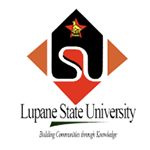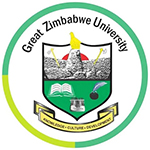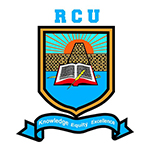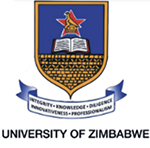The University of Zimbabwe is one of the most influential institutions of higher learning in the country, playing an important role in education, scientific research and social development. The specific introduction is as follows:
Introduction: The University of Zimbabwe is the largest and oldest university in Zimbabwe, and is known as the benchmark of higher education in the country. The school takes "knowledge, diligence and honesty" as its motto, adheres to a rigorous academic attitude, creates a high-quality learning environment for students, and is committed to cultivating professional talents with comprehensive development, social responsibility and innovative spirit, and promoting the country's educational progress, scientific and technological development and social prosperity.
Overview: The main campus is located in the suburbs of the capital Harare, covering an area of 191.8 hectares. In addition, there are branches in Bulawayo and Victoria Falls. The school has more than 20,000 students, forming a diverse student group. The school library has a rich collection, providing teachers and students with sufficient learning resources; the laboratory is equipped with advanced equipment to meet the needs of scientific research and teaching; the sports facilities are complete to promote the physical and mental health of students.
History: Its predecessor was the University College of Rhodesia and Nyasaland, which was established in 1952. In the course of its development, it cooperated with the University of London in the mid-1950s, and the University of London awarded degrees to its graduates; in 1963, the Medical School was established and jointly run with the University of Birmingham. With the changes of the times, it has undergone several name changes, and in 1971 it obtained university status. After Zimbabwe's independence, it was changed to its current name. From the late 20th century to the early 21st century, the school faced many challenges, such as student protests, teacher strikes, funding shortages and teacher loss, but it still insisted on development.
Establishment time: It was officially established in 1952.
School strength: It has 10 colleges, covering many fields such as science, engineering, agriculture, medicine, literature, law, business, education, and social sciences, and provides 175 undergraduate courses and 221 postgraduate courses. It has a team of highly qualified teachers, including experts and scholars with profound attainments in various disciplines. The school has achieved fruitful results in academic research, actively carried out international cooperation, established cooperative relations with many internationally renowned universities, and promoted academic exchanges and scientific research cooperation.
Nature of the institution: A public university, funded and managed by the Zimbabwean government. As a non-profit educational institution, it aims to train various professional talents for the country and promote social progress and economic development.
Educational philosophy: Guided by the school motto, it focuses on cultivating students' solid professional knowledge and skills, while emphasizing the attitude of diligent learning and honest moral cultivation. Encourage students to actively explore, be innovative, and cultivate critical thinking and problem-solving skills to meet the needs of social development.
Key laboratories and disciplines: Key disciplines include medicine, biology, engineering, law, business, etc. For example, in the field of medicine, its medical school has a long history and strong teaching and scientific research capabilities; the business major has trained many economic management talents for the country. Although the key laboratories are not clearly defined, in the research of various disciplines, advanced experimental facilities and scientific research platforms should be equipped to provide strong support for teaching and scientific research.
Faculty: There are 10 colleges, namely the College of Science, the College of Health, the College of Social Sciences, the College of Arts, the College of Business, the College of Education, the College of Agriculture, the College of Law, the College of Veterinary Medicine and the College of Engineering. Each college has distinct disciplines and provides students with a variety of professional choices.
Ranking: It has long been in a leading position among domestic universities in Zimbabwe. In terms of international rankings, due to differences in standards and data sources of different ranking agencies, its specific ranking fluctuates, but it has a certain influence among universities in Africa.
Fees: Tuition fees vary depending on majors, degree levels and student status. Generally speaking, tuition fees for domestic students are relatively low, while tuition fees for international students are higher. In addition to tuition fees, other fees such as accommodation fees and book fees may also be involved. The specific charging standards can be obtained through the school's official website or admissions department.
Campus environment: The main campus is located in the suburbs of Harare. The campus environment is beautiful, tree-lined and has diverse architectural styles. The teaching area, living area and leisure area are reasonably laid out, providing students with a comfortable learning and living environment. The library has a rich collection of books, providing convenience for students to consult information; the laboratory equipment is advanced to meet the needs of teaching and scientific research; the sports facilities are complete, including football fields, basketball courts, tennis courts, etc., to enrich students' extracurricular life.
-

Arrupe Jesuit University
-

Manicaland State University of Applied Sciences
-

Harare Institute of Technology
-

Chinhoyi University of Technology
-

Lupane State University
-

Marondera University of Agricultural Science & Technology
-

Great Zimbabwe University
-

Africa University
-

Reformed Church University
-

Solusi University
-

Mesoamerican University
-

Istmo University
-

Mariano Galvez University of Guatemala
-

Regional University of Guatemala
-

Galileo University
-

Francisco Marroquín University
-

Rafael Landívar University
-

University of the Valley of Guatemala
-

University of San Carlos of Guatemala
-

Technological Institute of Tlaxcala Plateau
-

Golfo University
-

Technological University of South Sonora
-

Technological University of Huejotzingo
-

Tizimín Institute of Technology
-

Chilpancingo Institute of Technology

